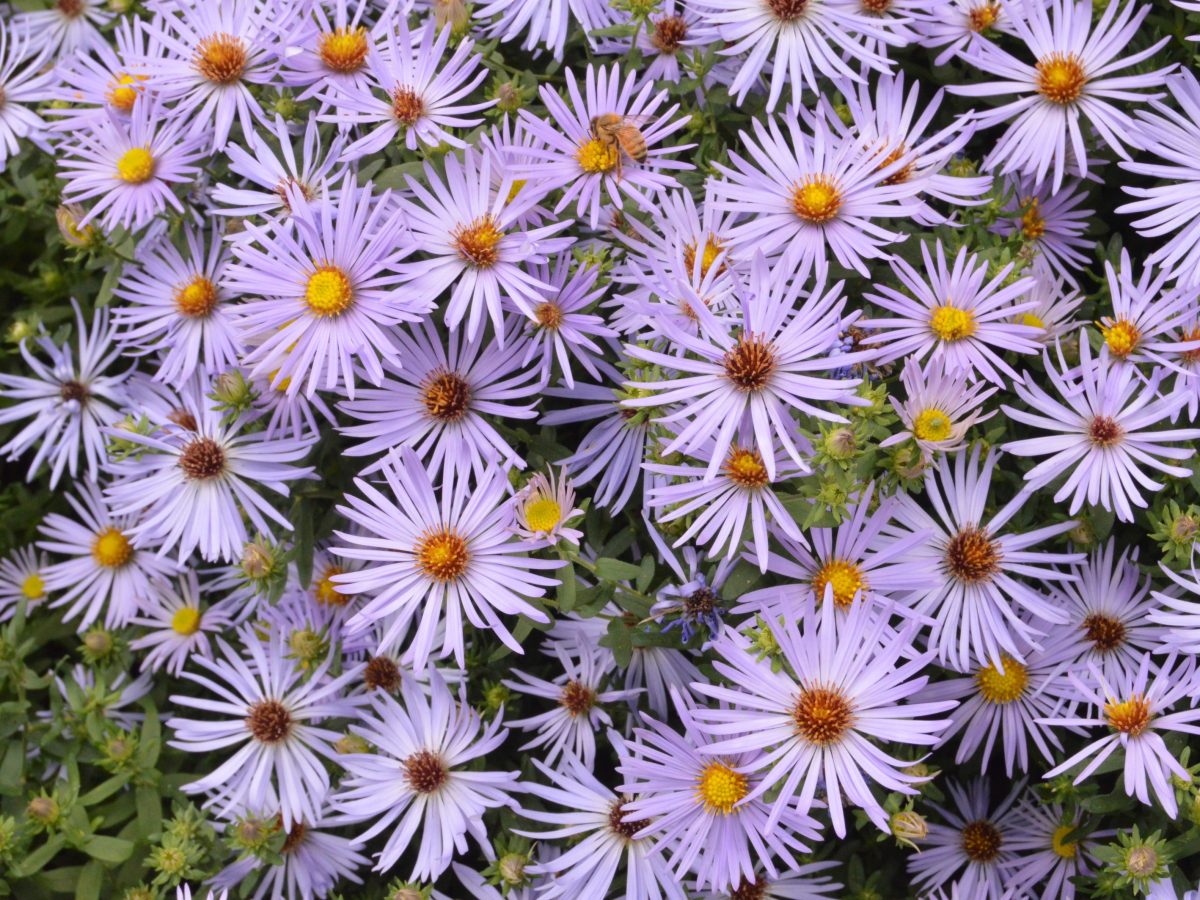
PLANT PROFILE
Asters (Family Asteraceae)
Asters are familiar and favorite garden plants in the summer-to-fall border. Mostly fall-blooming, their rich color is welcome when many other perennials are finished for the season.
Asters all belong to the daisy family, or Asteraceae, one of the largest flowering plant families. Some confusion exists because several plants with the common name “aster” belong to different genera. There is the genus Aster and the genus Symphyotrichum, both of which contain types of asters. The genera Stokesia and Asteromea are also considered different forms of asters.

Aromatic Aster
Symphyotrichum oblongifolium ‘Raydon’s Favorite’
- Height/Spread: 2–3 ft
- Bloom Time: August–October
- Light: Full sun
- Soil: Well-drained
- Wildlife: Butterfly favorite
‘Raydon’s Favorite’ is easy to grow in well-drained soil and full sun. Its mounded shape reaches 2–3 feet and is covered with striking violet-blue, daisy-like blooms from August to October. A native of the central and eastern U.S., it is a preferred nectar source for many butterfly species. Good perennial companions include goldenrod (Solidago) and black-eyed Susan (Rudbeckia).
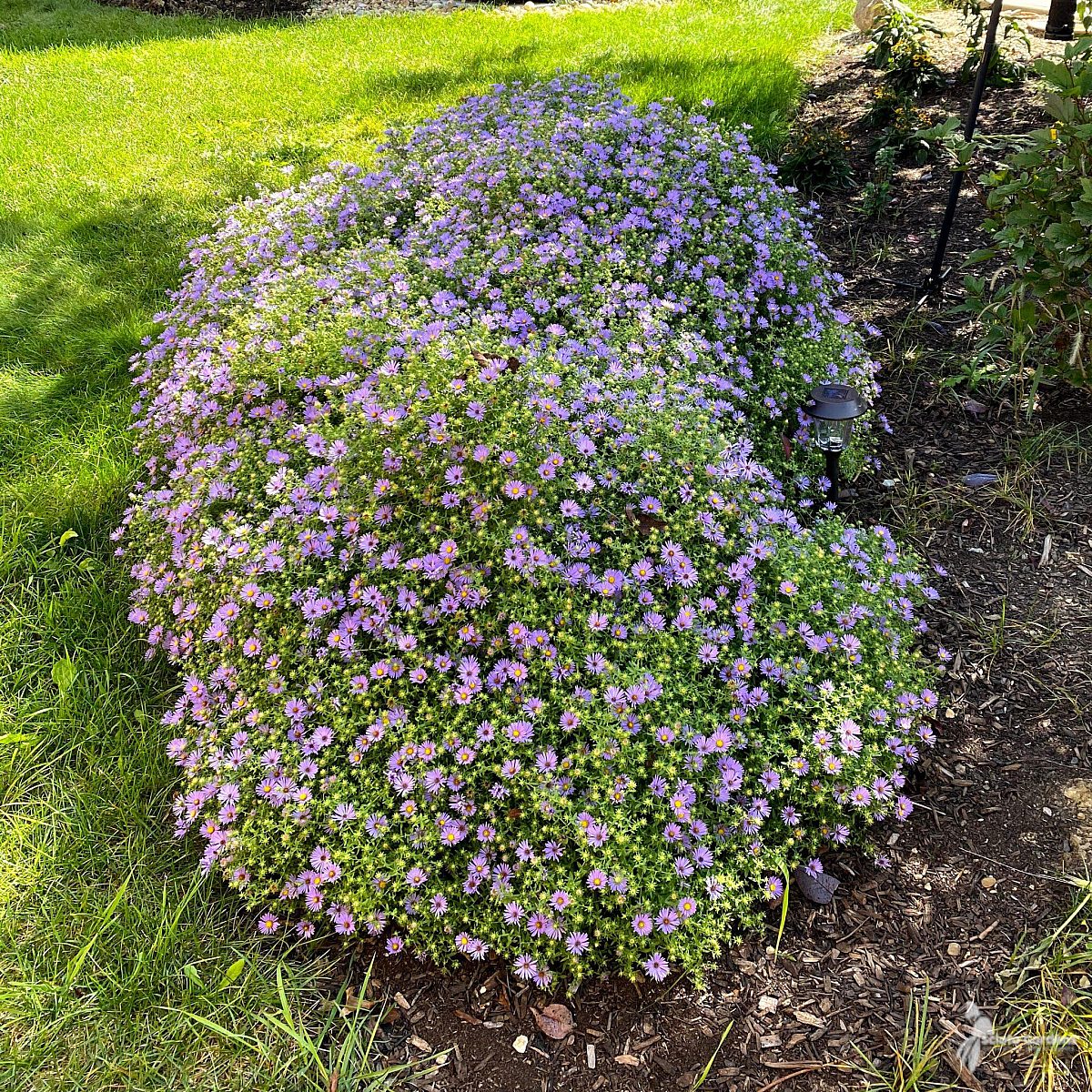
Aromatic Aster
Symphyotrichum oblongifolium ‘October Skies’
- Height/Spread: 1–2 ft tall, 3 ft wide
- Bloom Time: Late summer–fall
- Light: Full sun
- Soil: Well-drained
- Wildlife: Attracts bees and butterflies
‘October Skies’ is a smaller hybrid, reaching 1–2 feet tall and spreading 3 feet wide. It is a bushy, compact, mounding shrub with blue-green foliage and deep, sky-blue daisy-like flowers with yellow centers. The flower color is named for the deeper blue of the sky in October. It is a late-season nectar source for butterflies and bees, making it ideal for a pollinator garden. ‘October Skies’ thrives in full sun and well-drained soil, planted in the front-to-mid border.
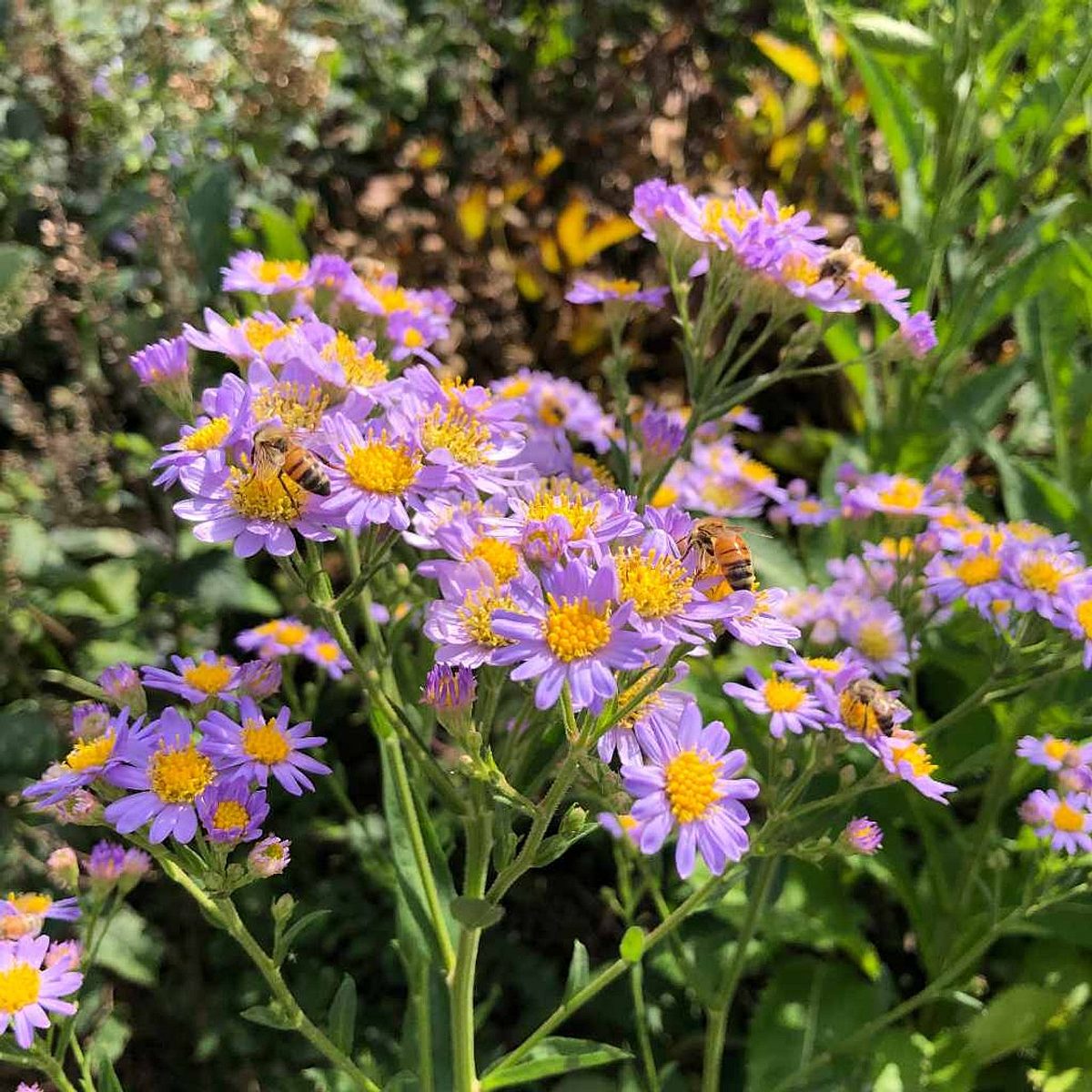
Tatarian Aster
Aster tataricus ‘Jindai’
- Height/Spread: 3–4 ft tall, 2–3 ft spread
- Bloom Time: September–November
- Light: Full sun
- Soil: Lean, dry soil preferred
- Notes: Can spread aggressively
Tatarian aster is usually the latest-blooming aster of the season. Reaching 3–4 feet tall with a 2–3 foot spread, it can be aggressive but stays well-behaved in dry, lean soil. One-inch lavender-blue flowers bloom in clusters from September to November, surrounded by large, coarse leaves that take on a reddish fall color.
‘Jindai’ was discovered in Jin-Dai Botanical Gardens in Tokyo, Japan. This very drought-tolerant plant grows best in large, sunny flower beds, at a sunny woodland edge, or in a pollinator garden. Good companions include Echinacea (coneflower), Achillea (yarrow), and Yucca.
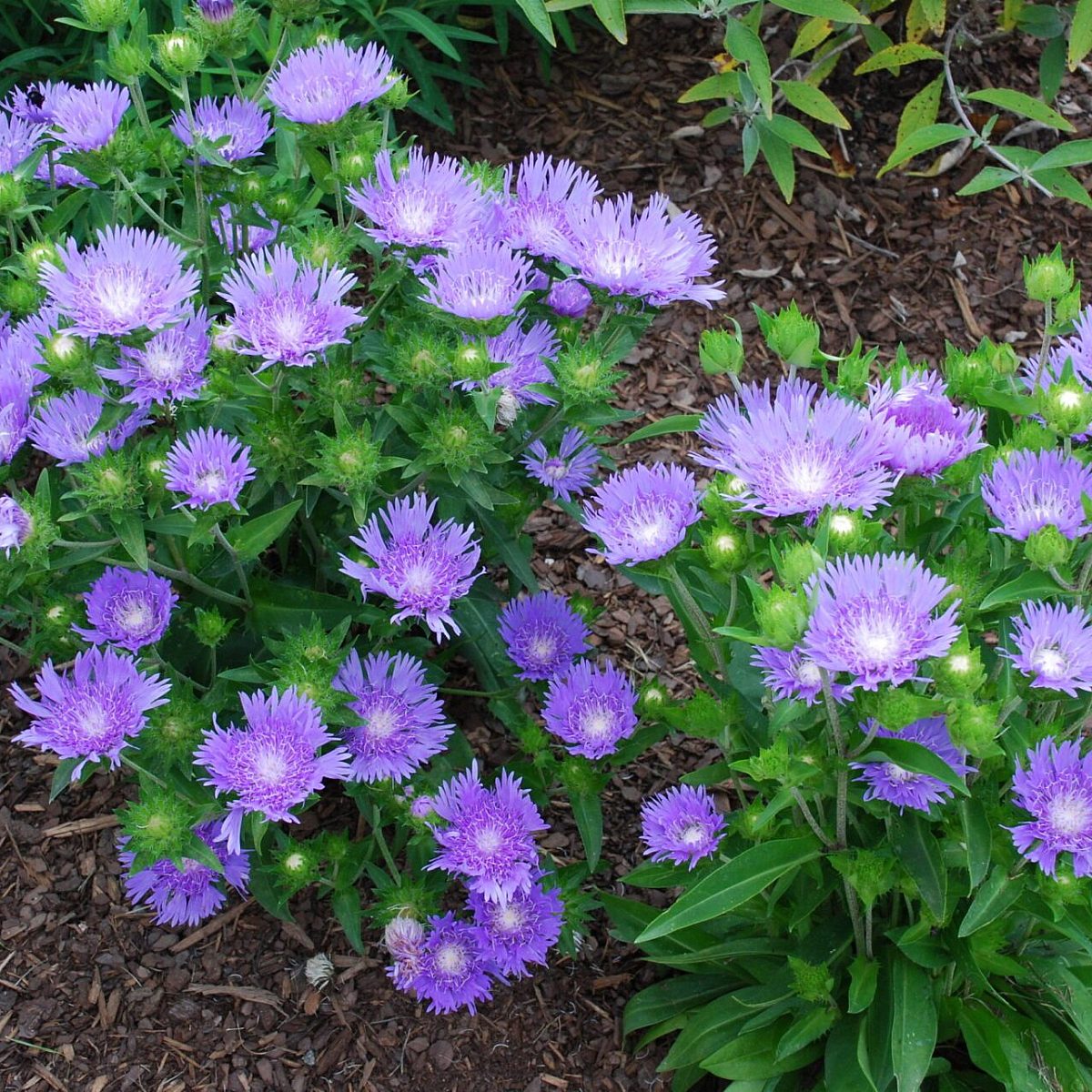
Stokes Aster
Stokesia laevis ‘Peachie’s Pick’
- Height: 12–18 in
- Bloom Time: Mid-summer to frost
- Light: Full sun
- Soil: Well-drained
- Features: Great cut flower
While Stokesia shares characteristics with other asters, it is distinguished by its large, disk-like, pincushion-shaped flowers. ‘Peachie’s Pick’ blooms are lavender-blue and last longer than those of other varieties, from mid-summer to frost.
Flower stalks reach 12–18 inches, emerging from deep green, strappy foliage. The strong stems make it desirable as a cut flower. Spent flowers can be deadheaded to encourage reblooming. ‘Peachie’s Pick’ is heat-tolerant, making it ideal for southern gardens, and is easily grown in well-drained soil.
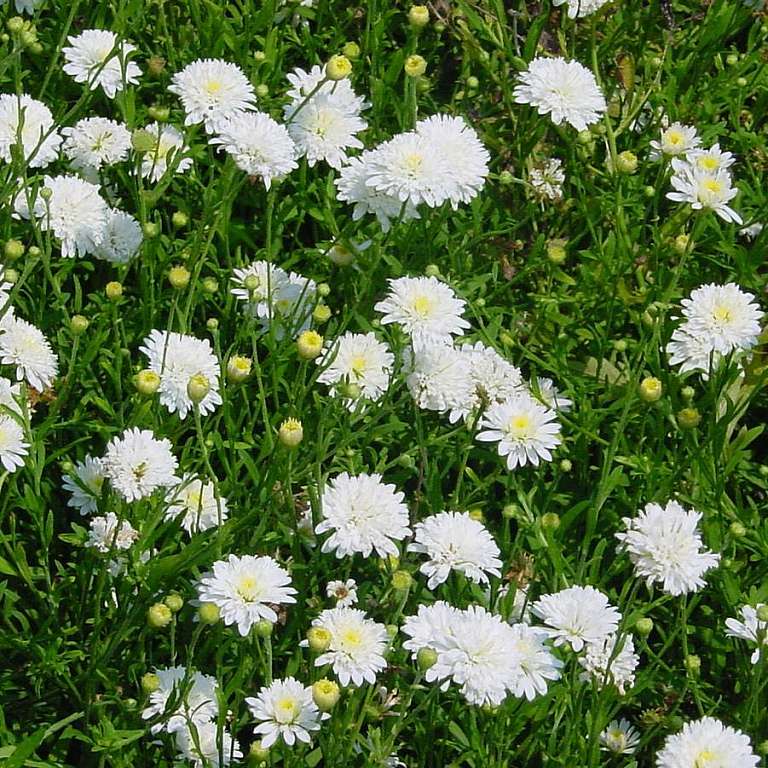
Japanese Aster
Asteromea mongolica
- Height/Spread: ~2 ft
- Bloom Time: Summer to frost
- Light: Sun to part shade
- Soil: Adaptable, well-drained
- Features: Heat-tolerant, easy to grow
Asteromea is a tough perennial for the southern garden due to its heat tolerance, but it is equally attractive. Long-blooming, small, double white flowers cover the plant from summer to frost. It looks best mass-planted in a sunny to part-shady border, where it reaches and spreads about 2 feet. It can also be interplanted among other perennials. This low-maintenance, easy-to-grow perennial is a pleasant surprise as it ages, spreading to form a welcome and very attractive colony.